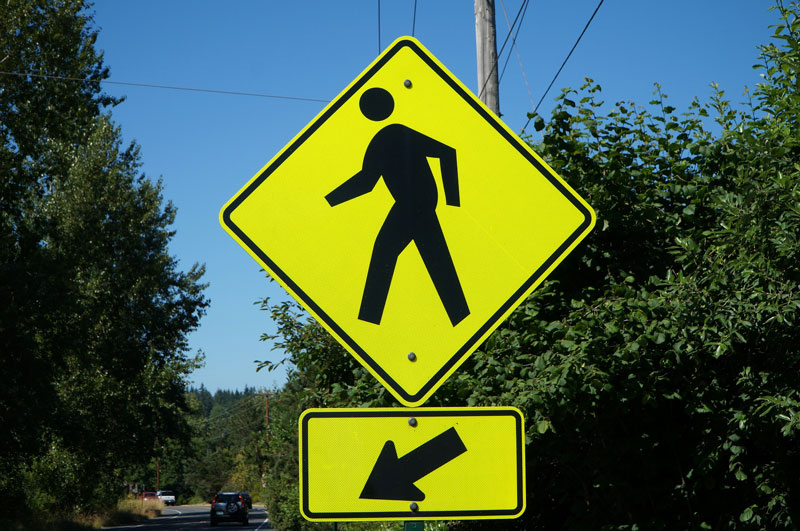Crosswalk Visibility Enhancements
Crosswalk Visibility Enhancements
Marked crosswalks are painted crosswalks that define the proper locations for pedestrians to cross the roadway and signify to motorist to yield to pedestrians. Section 3B of the MUTCD provides various crosswalk markings.

Photo courtesy of pixabay.com
Crosswalk Visibility enhancements include:
High Visibility Crosswalk Markings
Basic crosswalk markings consist of two transverse lines, while High-Visibility Crosswalk Markings include the continental, bar pairs, ladder and zebra markings. High-visibility crosswalks have been shown to increase driver yielding at uncontrolled pedestrian crossing locations.
Countermeasure Tech Sheets
Example Projects
- High Visibility Crosswalk and Pedestrian Crossing Warning Sign
(Swanson Avenue - Acoma Blvd to Smoketree Ave) - PDF | DGN (5.7 MB .zip)
Standards
- State Law
- A.R.S. 28-792 - Right of way at crosswalk
- A.R.S. 28-793 - Crossing at other than crosswalk
- A.R.S. 28-855 - Stop signs; yield signs
- MUTCD, 2009 edition (with Arizona Supplement)
- P88~92 Section 2B.46~49
- P55 2B.12/P92 2B.51
- ADOT Standard Drawings
Improved Nighttime Lighting
Pedestrian fatality rates are higher at night time than during daytime. A major contributing factor is lower visibility due to reduced ambient illumination. Adequate night time overhead lighting, near a crosswalk and approaching it, can increase pedestrian safety and comfort as well as the visibility of pedestrians by motorists.
Example Projects
Parking Restrictions on Crosswalk Approach
The primary purpose of parking restriction in advance of and on crosswalks is to improve sight distance and visibility between pedestrians and motorists in the crosswalk.
Standards
- State Law:
- A.R.S. 28-873 - Stopping, standing or parking prohibitions; exceptions; definition
Pedestrian Crossing Warning Sign

Pedestrian Crosswalk Sign; Photo courtesy of FHWA
